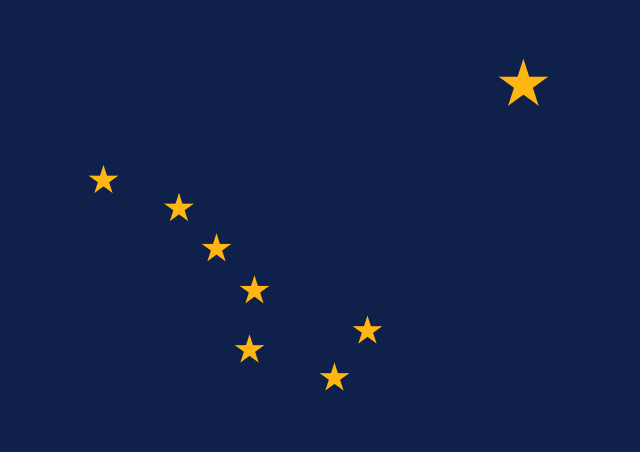Alaska is a disconnected state of the United States if America. It is separated from the rest of the United States by Canada, which borders the state to the east. Alaska is one of only two states that are disconnected; the other one is Hawaii. Alaska is also separated from Russia by the Bering Strait. Alaska is the northernmost and westernmost state in the United States.
History
Alaska was inhabited by both Alaska Natives and Eskimos prior to European colonization. In 1774, Spain attempted to colonize Southeastern Alaska, but left due to the frigid climate. The Spanish legacy survives in the city names of Cordova and Valdez.
Starting in 1784, Russia began to colonize Alaska under the Russian-America Company, a colonial venture established that same year. The first Russian settlement was Novo-Arkhangelsk (Modern-day Sitka), located on Baranof Island in the Alaska Panhandle.
After Russia’s defeat in the Crimean War, Alaska was under threat from British forces in Canada. As a result, they decided to sell it to the United States. In 1867, Alaska was purchased by the United States and would be administered by the military. During this period, the only American settlement was Sitka, which remained the only city in Alaska until the establishment of Juneau in 1903.
During the 1890s, the Klondike Gold Rush brought new settlers to Alaska. This continued until the early 1910s. In 1914, the city of Anchorage was founded as a tent town for workers on the Alaska Railroad. This railroad tent town would eventually grow into Alaska’s biggest city.
In 1942, Japan invaded the Aleutian Islands, occupying the islands of Attu, Kiska, and Agattu. The Japanese Forces were expelled from the islands by the American Navy the following year. These three islands were the only part of North America occupied by the Axis Powers in World War Two.
In 1959, Alaska was granted statehood, becoming the 49th state to join the United States.
In 1964, the Good Friday Earthquake struck Southern Alaska. The tsunamis that followed would claim the lives of 133 people and destroyed many coastal villages. This earthquake was the fourth biggest earthquake in recorded history. For comparison, the Loma Prieta Earthquake, which struck San Francisco in 1989, was less powerful than the 1964 earthquake in Alaska.
In 1968, oil was discovered in Prudhoe Bay. In order to get the oil out of the wilderness, the Trans-Alaska Pipeline was constructed, connecting the oil wells of Prudhoe Bay to the port city of Valdez.
In 1989, the Exxon Valdez oil tanker hit an underwater obstacle. This resulted in oil spilling into the Prince William Sound and the deaths of many underwater animals.
In the 2008 presidential election, Republican nominee John McCain chose Alaska governor Sarah Palin to be his vice presidential running mate. Had she won, she would’ve been the first Alaskan to serve as vice president in American history. However, since McCain lost the election to Barack Obama, Palin never became vice president. She later resigned from office in 2009 due to an ethics scandal.
